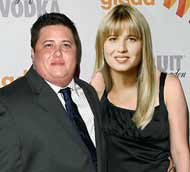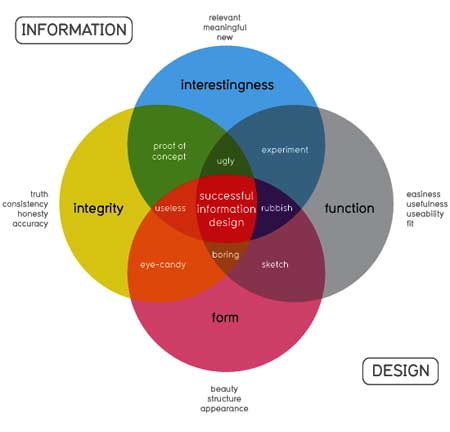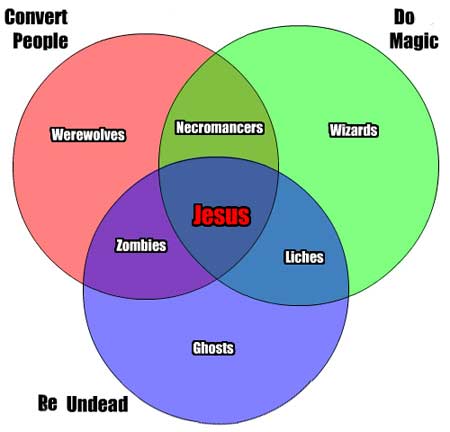News and Site Updates Archive 2010/05/31
The shortness of life, so often lamented, may be the best thing about it.
– Arthur Schopenhauer
"Nullius in Verba" is a Latin phrase which roughly translates to "Don't take anyone's word for it".
 Psychopaths are characterised by callousness, diminished capacity for remorse, and lack of empathy. They have a reduced capacity
to make inferences about the mental states of other people, an ability known as Theory of Mind (ToM). On the other hand, they're known to be extremely good manipulators and deceivers, which would imply
that they have good skills in inferring the knowledge, needs, intentions, and beliefs of others. ToM is made up of different aspects: a cognitive part requires inferences about knowledge and beliefs
while a different part requires the understanding of emotions. Impairment in the emotional aspect may account for psychopathic behaviour. It has been observed that patients with damage to their
brain's frontal lobes lack some emotional aspects, so psychopathy may indicate frontal lobe dysfunction. The emotional and cognitive aspects of Theory of Mind abilities were examined for participants in
a study, which consisted of criminal offenders diagnosed as having antisocial personality disorder with highly psychopathic tendencies. These were compared to patients with damage to the frontal lobes of
the brain, patients with damage to other areas of the brain, and healthy controls. The pattern of impairments in the psychopathic participants showed a remarkable resemblance to those in participants
with frontal lobe damage suggesting that an underlying cause of the behavioural disturbances observed in psychopathy may merely be dysfunction in the frontal lobes. In some cases, this may have resulted
from harsh physical abuse received as a child. Yet not all individuals with such damage commit heinous crimes. There must be something else also
involved. More. Psychopaths are characterised by callousness, diminished capacity for remorse, and lack of empathy. They have a reduced capacity
to make inferences about the mental states of other people, an ability known as Theory of Mind (ToM). On the other hand, they're known to be extremely good manipulators and deceivers, which would imply
that they have good skills in inferring the knowledge, needs, intentions, and beliefs of others. ToM is made up of different aspects: a cognitive part requires inferences about knowledge and beliefs
while a different part requires the understanding of emotions. Impairment in the emotional aspect may account for psychopathic behaviour. It has been observed that patients with damage to their
brain's frontal lobes lack some emotional aspects, so psychopathy may indicate frontal lobe dysfunction. The emotional and cognitive aspects of Theory of Mind abilities were examined for participants in
a study, which consisted of criminal offenders diagnosed as having antisocial personality disorder with highly psychopathic tendencies. These were compared to patients with damage to the frontal lobes of
the brain, patients with damage to other areas of the brain, and healthy controls. The pattern of impairments in the psychopathic participants showed a remarkable resemblance to those in participants
with frontal lobe damage suggesting that an underlying cause of the behavioural disturbances observed in psychopathy may merely be dysfunction in the frontal lobes. In some cases, this may have resulted
from harsh physical abuse received as a child. Yet not all individuals with such damage commit heinous crimes. There must be something else also
involved. More.
 Imagine your delight while enjoying your favourite Mexican food – perhaps a fully loaded bean burrito topped with an ample supply of thinly sliced jalepeño peppers. What
happens when you bite into a few more peppers than you bargained for? Does this image conjure up the thought of a little heat? Perhaps even a bit of sweat on the brow? Indeed, food scientists
say that hot peppers contain capsaicin, a substance that not only adds spice to food but can actually cause your body to heat up. Plants evolved capsaicin to protect them from being eaten by insects and
other predators. Cuisines worldwide rely on capsaicin-packing peppers to add pungency and zing to many traditional foods, and "pepperheads" often choose a meal to purposefully turn up the
heat. Growing evidence suggests that the body-heat-generating power of peppers might provide assistance in the
quest to lose weight. Luckily, for those unable or unwilling to eat such spicy food, some plants make a non-burning version of capsaicin called dihydrocapsiate (DCT) that may have the
benefits of peppers without their pungency. 34 men and women consumed a very low-calorie liquid meal replacement product for 28 days. They then took either placebo pills or supplements
containing a non-burning DCT pepper analog. At least for several hours after the test meal was consumed, energy expenditure was significantly increased in the group consuming the highest amount
of DCT - almost double that of the placebo group. It significantly increased fat oxidation, pushing the body to use more fat as fuel. This may help people lose weight when consuming a
low-calorie diet by increasing metabolism. Imagine your delight while enjoying your favourite Mexican food – perhaps a fully loaded bean burrito topped with an ample supply of thinly sliced jalepeño peppers. What
happens when you bite into a few more peppers than you bargained for? Does this image conjure up the thought of a little heat? Perhaps even a bit of sweat on the brow? Indeed, food scientists
say that hot peppers contain capsaicin, a substance that not only adds spice to food but can actually cause your body to heat up. Plants evolved capsaicin to protect them from being eaten by insects and
other predators. Cuisines worldwide rely on capsaicin-packing peppers to add pungency and zing to many traditional foods, and "pepperheads" often choose a meal to purposefully turn up the
heat. Growing evidence suggests that the body-heat-generating power of peppers might provide assistance in the
quest to lose weight. Luckily, for those unable or unwilling to eat such spicy food, some plants make a non-burning version of capsaicin called dihydrocapsiate (DCT) that may have the
benefits of peppers without their pungency. 34 men and women consumed a very low-calorie liquid meal replacement product for 28 days. They then took either placebo pills or supplements
containing a non-burning DCT pepper analog. At least for several hours after the test meal was consumed, energy expenditure was significantly increased in the group consuming the highest amount
of DCT - almost double that of the placebo group. It significantly increased fat oxidation, pushing the body to use more fat as fuel. This may help people lose weight when consuming a
low-calorie diet by increasing metabolism.
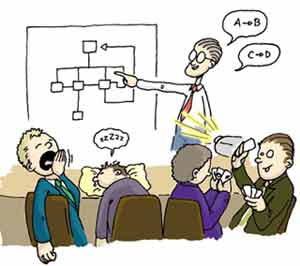

Going from Bad to Good
 Personal appearance plays a role even at the corporate executive
level. By pairing photos of chief executive officers (CEOs) of large and small companies with photos of non-executives with similar facial features, hairstyles and clothing, finance professors at Duke
University's Fuqua School of Business found that CEOs are more likely than non-CEOs to be rated as competent looking,
but less likely to be classified as likeable. Those CEOs who appeared competent actually earned more money in real life than the less competent-looking CEOs, even though appearance was not
associated with measurable differences in company profitability. Other researchers have found links between beauty and workers' pay, and demonstrated that politicians benefit from good looks at
election time. Nearly 2,000 participants assessed photos of more than 100 CEOs and non-executives, ranking pairs of photos according to attractiveness, competence, trustworthiness, and
likeability. For the purposes of the experiment, only photos of white male CEOs were used, though appearance certainly plays a major role in the careers of women, minorities, and mannequins
alike. (Manuel Cognati - we all call him Manny - is the CEO of our animation company, Thaumaturgy Studios, Ltd, here in Wellington. Lucky for us, he is both competent and
likeable.) Personal appearance plays a role even at the corporate executive
level. By pairing photos of chief executive officers (CEOs) of large and small companies with photos of non-executives with similar facial features, hairstyles and clothing, finance professors at Duke
University's Fuqua School of Business found that CEOs are more likely than non-CEOs to be rated as competent looking,
but less likely to be classified as likeable. Those CEOs who appeared competent actually earned more money in real life than the less competent-looking CEOs, even though appearance was not
associated with measurable differences in company profitability. Other researchers have found links between beauty and workers' pay, and demonstrated that politicians benefit from good looks at
election time. Nearly 2,000 participants assessed photos of more than 100 CEOs and non-executives, ranking pairs of photos according to attractiveness, competence, trustworthiness, and
likeability. For the purposes of the experiment, only photos of white male CEOs were used, though appearance certainly plays a major role in the careers of women, minorities, and mannequins
alike. (Manuel Cognati - we all call him Manny - is the CEO of our animation company, Thaumaturgy Studios, Ltd, here in Wellington. Lucky for us, he is both competent and
likeable.)

...I heard it was a Capital offense...
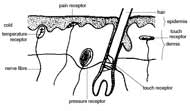 How many senses do we have? The answer depends on how we divide up our sensory
systems. We could classify senses by nature of stimulus; then there'd be only 3 types - Chemical (sensed as tastes, smells or internally, as with blood glucose),
Mechanical (touch and hearing) and Light (vision). But some also have electroreception or a
Magnetic sense, which would constitute a 4th type. These groups of sensation require sensory systems quite different from each other - something dissolving on the
tongue producing an odour permeating up into the nose and fitting into a receptor is quite different from the mechanical movement of a hair cell in the ear or a photon hitting the retina. We could
subdivide further and define a "sense" as specialised cells responding to specific signals and reporting to a particular part of the brain. Taste would be not one sense but 5 (or 6) - sweet,
salty, sour, bitter, umami (glutamate) and perhaps fat. Vision could be one sense (light), two (light and colour), or four (light, red, green and blue). In some animals, rod cells respond only to
movement - a separate sense? Pain is classified as cutaneous, somatic or visceral depending on location - are these different sensory systems or is it simply a matter of geography where pain is
felt? People sense temperature, pressure, touch, joint position (proprioception), body movement (kinaesthesis), balance and feelings associated with a full bladder, an empty stomach, or
thirst. Other monitoring systems in our bodies include, for example, sensing the pH of our cerebrospinal fluid. It isn't our senses but our *perceptions* that really
matter. How many senses do we have? The answer depends on how we divide up our sensory
systems. We could classify senses by nature of stimulus; then there'd be only 3 types - Chemical (sensed as tastes, smells or internally, as with blood glucose),
Mechanical (touch and hearing) and Light (vision). But some also have electroreception or a
Magnetic sense, which would constitute a 4th type. These groups of sensation require sensory systems quite different from each other - something dissolving on the
tongue producing an odour permeating up into the nose and fitting into a receptor is quite different from the mechanical movement of a hair cell in the ear or a photon hitting the retina. We could
subdivide further and define a "sense" as specialised cells responding to specific signals and reporting to a particular part of the brain. Taste would be not one sense but 5 (or 6) - sweet,
salty, sour, bitter, umami (glutamate) and perhaps fat. Vision could be one sense (light), two (light and colour), or four (light, red, green and blue). In some animals, rod cells respond only to
movement - a separate sense? Pain is classified as cutaneous, somatic or visceral depending on location - are these different sensory systems or is it simply a matter of geography where pain is
felt? People sense temperature, pressure, touch, joint position (proprioception), body movement (kinaesthesis), balance and feelings associated with a full bladder, an empty stomach, or
thirst. Other monitoring systems in our bodies include, for example, sensing the pH of our cerebrospinal fluid. It isn't our senses but our *perceptions* that really
matter.
 A professor of
electrical engineering at Louisiana Tech University has developed a technology
that harvests power from a small generator embedded in the sole of a shoe. This innovation is based on new voltage regulation circuits that efficiently convert a piezoelectric charge into usable
energy for charging batteries or for directly powering electronics. This device could be used, for example, by hikers needing emergency location devices or beacons. For more general use, it could
be used to power portable devices without wasteful batteries. Energy harvesting is an attractive way to power sensors and locator devices such as GPS. However, harvesting technologies often fall
short in terms of output as many modern applications require higher power levels. However, this shoe generator uses a low-cost polymer transducer with metalized surfaces for electrical
contact. Unlike conventional ceramic transducers, the polymer-based generator is soft and robust, matching properties of regular shoe fillings. This would allow the device to replace a shoe's heel
shock absorber with no loss in user experience. The ultimate goal is to increase power levels to the point where the shoe can charge or power electronics such as cell
phones. A professor of
electrical engineering at Louisiana Tech University has developed a technology
that harvests power from a small generator embedded in the sole of a shoe. This innovation is based on new voltage regulation circuits that efficiently convert a piezoelectric charge into usable
energy for charging batteries or for directly powering electronics. This device could be used, for example, by hikers needing emergency location devices or beacons. For more general use, it could
be used to power portable devices without wasteful batteries. Energy harvesting is an attractive way to power sensors and locator devices such as GPS. However, harvesting technologies often fall
short in terms of output as many modern applications require higher power levels. However, this shoe generator uses a low-cost polymer transducer with metalized surfaces for electrical
contact. Unlike conventional ceramic transducers, the polymer-based generator is soft and robust, matching properties of regular shoe fillings. This would allow the device to replace a shoe's heel
shock absorber with no loss in user experience. The ultimate goal is to increase power levels to the point where the shoe can charge or power electronics such as cell
phones.  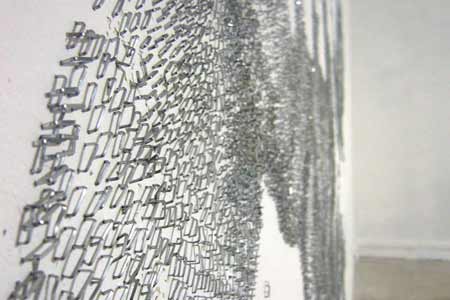
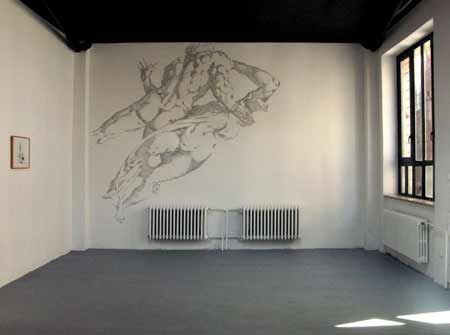 
I like these artworks (by Baptiste Debombourg), each of which uses 35,000
staples. However, the artists explanations are nonsensical.
Example: "Is it why this 'Superman' flies straight down towards the earth?
Here it's used the tacker as a material and media, which plays with the contemporary agression and the profanized utility of the everyday life."
Neither work appears to depict anyone flying straight down. And just what makes utility be profane? (Hammering your thumb, perhaps?)
 Zebra finches breed in colonies and each pair cares for its own
offspring. However, some females (about 5% of the total) appear to
specialise in outsourcing parental work of some of their eggs - they lay an egg or two in other finches' nests, then raise a brood of their own as well. Statistically, 1 in 5 nests each year contains
an egg that is not related to the others. The sneaky females must time their egg-laying very precisely. Incubation starts usually shortly after laying the first or second egg. When the
parents are already sitting on their nests, it is hardly possible to foist an egg off on them. But if the female drops the egg too early to a host's nest, the latter might abandon that nest and build
another. Researchers found no cues that these females target specific host pairs - in fact, a host pair was rarely hit a second time, a sign that birds may be capable of learning to defend
themselves. But why interpret it so negatively? Frankly, I see it as a brilliant strategy and would be surprised if more bird species don't practice it. Pairs of females could, in essence,
swap single eggs, thereby ensuring continuance of at least one offspring should the primary provider not survive the season. It would seem to be rather good genetic
insurance. Zebra finches breed in colonies and each pair cares for its own
offspring. However, some females (about 5% of the total) appear to
specialise in outsourcing parental work of some of their eggs - they lay an egg or two in other finches' nests, then raise a brood of their own as well. Statistically, 1 in 5 nests each year contains
an egg that is not related to the others. The sneaky females must time their egg-laying very precisely. Incubation starts usually shortly after laying the first or second egg. When the
parents are already sitting on their nests, it is hardly possible to foist an egg off on them. But if the female drops the egg too early to a host's nest, the latter might abandon that nest and build
another. Researchers found no cues that these females target specific host pairs - in fact, a host pair was rarely hit a second time, a sign that birds may be capable of learning to defend
themselves. But why interpret it so negatively? Frankly, I see it as a brilliant strategy and would be surprised if more bird species don't practice it. Pairs of females could, in essence,
swap single eggs, thereby ensuring continuance of at least one offspring should the primary provider not survive the season. It would seem to be rather good genetic
insurance.   This is a council flat in an eastern suburb of Lyon. This is the same artist as the one above (Baptiste Debombourg).
This time, he's used Styrofoam to show what a difference the adornment of windows and doors can make.
Apparently his native language is French and he definitely speaks my language lots better than I can speak his, so I hope I don't seem churlish.
That said, this kind of idea can be implemented in Photoshop easier and vastly cheaper.
To have spent 161 hours putting up foam that will deteriorate and crumble, yet virtually never decay just to make a visual point
doesn't indicate to me that this "artist" values his time very highly.
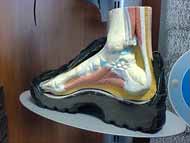  Your shoes influence the way you walk, the shape of your foot, and
even the number and type of pathologies present in your foot bones. A recent study has found that 70% of European males and 66% of females have some pathological condition in their big toe - compared
to 35% of individuals from an archaeological population which habitually walked barefoot. The study found similar results for other foot bones suggesting that the habitually unshod foot is healthier
than the habitually shod foot in almost all ways. Similar patterns exist for modern (shoe-wearing) populations of Zulu and Sotho. Perhaps most telling was the fact that high levels of bone
deformation or pathological changes obscuring measurement were excluded from the sample. While a number of individuals from the 3 habitually shod populations had bones so damaged they couldn't be
measured, this was true for none of the archaeological, unshod population. [However, the unshod population didn't spend quite so much time walking on hard (paved) surfaces, either, which might
matter.] Your shoes influence the way you walk, the shape of your foot, and
even the number and type of pathologies present in your foot bones. A recent study has found that 70% of European males and 66% of females have some pathological condition in their big toe - compared
to 35% of individuals from an archaeological population which habitually walked barefoot. The study found similar results for other foot bones suggesting that the habitually unshod foot is healthier
than the habitually shod foot in almost all ways. Similar patterns exist for modern (shoe-wearing) populations of Zulu and Sotho. Perhaps most telling was the fact that high levels of bone
deformation or pathological changes obscuring measurement were excluded from the sample. While a number of individuals from the 3 habitually shod populations had bones so damaged they couldn't be
measured, this was true for none of the archaeological, unshod population. [However, the unshod population didn't spend quite so much time walking on hard (paved) surfaces, either, which might
matter.]
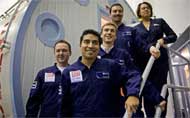 Wanted: 6 men to spend up to 2 years
together in cramped quarters pretending to be astronauts (alcohol, cigarettes and sex not allowed). Such Spartan living conditions may sound unappealing but it awaits 6 volunteers about to embark on
a gruelling world first: a simulated flight to Mars and back. The "lucky" volunteers will spend a minimum of 520 days together in a sealed 5-capsule metal unit measuring just 1,000 square
feet. Daily life will be strictly regimented: 8 hours sleep, 8 hours work, and 8 hours leisure. The joint Russian, Chinese and European crew will have to work hard to ensure isolation,
claustrophobia, and monotony don't get the better of them. Once the experiment begins, the crew will only have contact with mission controllers and loved ones via the internet (functioning with a
20-minute time lag to simulate flight conditions in deep space). The mock spacecraft contains a living capsule (divided into 6 small cabins), kitchen, lavatory, and communal room. A second capsule
is earmarked for medical and psychological experiments; a third houses gym and greenhouse where crew can grow fresh vegetables to supplement standard space rations. The last 2 capsules are simulators
only used once the crew "reach" Mars: one simulates the interior of a Mars landing vehicle (space suits must be worn inside it at all times) while another is a mock-up of what scientists think the surface of
Mars looks like (giving crew members a chance to practice spacewalks). The "spacewalk" practice seems nonsensical to me. They mean to practice walking on Mars inside a tiny capsule? That
seems useless. And women are of necessity excluded? Why not "send" 6 women, then? Should organisers ensure all men are heterosexual? If 6 people of mixed sex can't be trusted to spend 2
years together in a spaceship, then interplanetary travel is doomed. Perhaps 3 stable, happily married couples could/should be sent instead? (Or eunuchs?) Wanted: 6 men to spend up to 2 years
together in cramped quarters pretending to be astronauts (alcohol, cigarettes and sex not allowed). Such Spartan living conditions may sound unappealing but it awaits 6 volunteers about to embark on
a gruelling world first: a simulated flight to Mars and back. The "lucky" volunteers will spend a minimum of 520 days together in a sealed 5-capsule metal unit measuring just 1,000 square
feet. Daily life will be strictly regimented: 8 hours sleep, 8 hours work, and 8 hours leisure. The joint Russian, Chinese and European crew will have to work hard to ensure isolation,
claustrophobia, and monotony don't get the better of them. Once the experiment begins, the crew will only have contact with mission controllers and loved ones via the internet (functioning with a
20-minute time lag to simulate flight conditions in deep space). The mock spacecraft contains a living capsule (divided into 6 small cabins), kitchen, lavatory, and communal room. A second capsule
is earmarked for medical and psychological experiments; a third houses gym and greenhouse where crew can grow fresh vegetables to supplement standard space rations. The last 2 capsules are simulators
only used once the crew "reach" Mars: one simulates the interior of a Mars landing vehicle (space suits must be worn inside it at all times) while another is a mock-up of what scientists think the surface of
Mars looks like (giving crew members a chance to practice spacewalks). The "spacewalk" practice seems nonsensical to me. They mean to practice walking on Mars inside a tiny capsule? That
seems useless. And women are of necessity excluded? Why not "send" 6 women, then? Should organisers ensure all men are heterosexual? If 6 people of mixed sex can't be trusted to spend 2
years together in a spaceship, then interplanetary travel is doomed. Perhaps 3 stable, happily married couples could/should be sent instead? (Or eunuchs?)
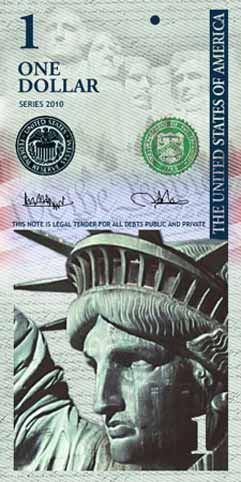 
 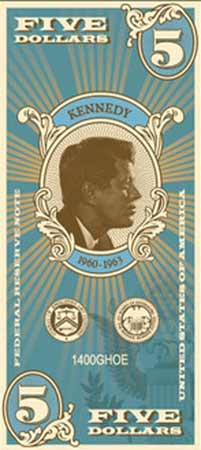
The Dollar ReDe$ign Project hopes to bring about change for
everyone, to rebrand the US dollar, to rebuild financial confidence and to revive the US failing economy.
Some of the entries have involved a great deal of effort and some are even vast improvements over the current currency.
I thought many of the entries looked too much like postage stamps, tickets, or Monopoly money.
Also featured were Michael Jackson, Oprah Winfrey, Farrah Fawcett, a young Jack Nicholson, a nude,
marbles, Barbie, Superman, and advertisements - not exactly confidence-inspiring money for me.
I was surprised at how many entrants had the idea of vertical money, so I selected the 4 of this category that I liked best.
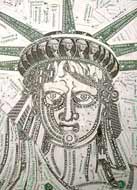
Finding a way to make money out of art has, for some artists, been their sole motivation but for a 22-year-old Latvian artist it is her inspiration. Irina Truhanova makes art out of
(apparently only American) money. Tearing, ripping and cutting real dollar bills, she creates collages which sell for hundreds of dollars. (If the US currency is replaced by one of the designs
above, would she then have lots of cheap material - discarded old dollars - to work with? Or would her designs only have value (as it were) if the currency
was - well - current?)
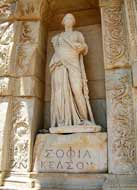 Two medical doctors who are also professors in the department of psychiatry at the University of California, San Diego, have tried to
define "wisdom". They asked a group of international experts to characterise the traits of wisdom, intelligence and spirituality – and measure how each trait is either similar to or different from
the others. They concluded that no single definition of wisdom is all-inclusive, embracing every important aspect. Intelligence and spirituality share features with wisdom, but are not the same
thing as one can be intelligent, yet lack practical knowledge. Spirituality is often associated with age, like wisdom, but most researchers prefer to define wisdom in secular terms, not
spiritual. The 30 international experts who responded to the questionnaire agreed on only 5 characteristics of wisdom: Two medical doctors who are also professors in the department of psychiatry at the University of California, San Diego, have tried to
define "wisdom". They asked a group of international experts to characterise the traits of wisdom, intelligence and spirituality – and measure how each trait is either similar to or different from
the others. They concluded that no single definition of wisdom is all-inclusive, embracing every important aspect. Intelligence and spirituality share features with wisdom, but are not the same
thing as one can be intelligent, yet lack practical knowledge. Spirituality is often associated with age, like wisdom, but most researchers prefer to define wisdom in secular terms, not
spiritual. The 30 international experts who responded to the questionnaire agreed on only 5 characteristics of wisdom:
 It is uniquely human.
 It is a form of advanced cognitive and emotional development that is experience-driven.
 It is a personal quality, albeit rare.
 It can be learned, increases with age and can be measured.
 It is probably not enhanced by taking medication.
I shall refrain from comment other than to say that it can decrease with age (think Alzheimer's) and that elephant matriarchs have been characterised as acquiring
it. The photo is of Sophia, personification of wisdom at the Celsus Library in Ephesus, Turkey.
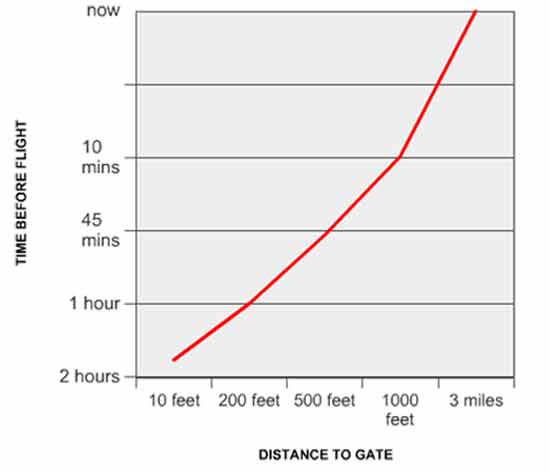
Distance to Boarding Gate versus When My Flight Leaves
Good Information Design versus
Mythical Creatures
What makes good information design?
Though the graph on the left was picked up by several internet sites, I would say that it doesn't embody that which it
attempts to define.
For one thing, a Venn diagram with 4 circles creates exclusionary areas which, in this particular example, I don't feel are justified. To quote the creator:
"This is the point where I go a bit glassy. To be honest, I don’t know. I am unschooled in both information (I was a college dropout) and design (I am a self-taught designer). I’ve never
really thought about it. So, I made a nice cup of tea and had a think and came up with this."
Most of the sites who referenced this diagram did so with no comment, as if it speaks for itself.
John Randle at least added: "So what does make good information design? Well David McCandless has been pondering over
this whilst enjoying a nice cup of tea. Everyone from UE’s, IA’s, designers etc etc will have a different opinion on this one but at least he’s had a stab at giving it some structure."
It did cause a lively discussion at our house and led my son Cody to try his hand at Venn diagramming. He came up with the diagram shown at right.
 Empathy is a complicated emotion, even for mice. On seeing another in pain, a mouse will act as if it itself
is also hurting — much more, though, if it knows the first mouse. Capuchin monkeys will help out another monkey, without any reward - but only if they're on friendly terms. People also feel less
empathy for those they dislike. But our species adds another layer of complication: We empathise more with people who are "like us" than with "them." This study suggests that the Us/Them divide is
generalised — the brain responds differently to any action performed by "one of us," not just to signs of trouble. Researchers used an MRI scanner to measure activity in the anterior cingulate cortex
(ACC) region of 33 college students as they watched films of other people getting poked in the cheek with either a Q-tip or a sharp needle. A neural circuit involving the ACC is active when you feel pain
in your own body and when you see others being hurt. Like a monkey, your circuit will respond less if you have a low opinion of the person being hurt - at least if you're male. In addition,
subjects' pain circuits respond more when the injured party is of the same race. Chinese reacted more to photos of Chinese injury, and whites to white. But men empathised less with others if they
believed those others had been unfair. This suggests empathy is shaped by experience — we learn who to "mentally simulate" and who not to. Race is used in prejudice experiments because
it's handy, not because it's special. Religion - when it's identifiable at a glance, say because of clothing - can be (and often is in real life) used instead. Empathy is a complicated emotion, even for mice. On seeing another in pain, a mouse will act as if it itself
is also hurting — much more, though, if it knows the first mouse. Capuchin monkeys will help out another monkey, without any reward - but only if they're on friendly terms. People also feel less
empathy for those they dislike. But our species adds another layer of complication: We empathise more with people who are "like us" than with "them." This study suggests that the Us/Them divide is
generalised — the brain responds differently to any action performed by "one of us," not just to signs of trouble. Researchers used an MRI scanner to measure activity in the anterior cingulate cortex
(ACC) region of 33 college students as they watched films of other people getting poked in the cheek with either a Q-tip or a sharp needle. A neural circuit involving the ACC is active when you feel pain
in your own body and when you see others being hurt. Like a monkey, your circuit will respond less if you have a low opinion of the person being hurt - at least if you're male. In addition,
subjects' pain circuits respond more when the injured party is of the same race. Chinese reacted more to photos of Chinese injury, and whites to white. But men empathised less with others if they
believed those others had been unfair. This suggests empathy is shaped by experience — we learn who to "mentally simulate" and who not to. Race is used in prejudice experiments because
it's handy, not because it's special. Religion - when it's identifiable at a glance, say because of clothing - can be (and often is in real life) used instead.

I'd like this clock much better if it were real and up on the wall. Also, I don't really like the flash-then-reversal when one of the rings completes a circuit.
I would prefer a colour change and fadeout and I'd make the inner circles thinner.
That said, it's a clever idea and it is now available as a free screensaver with lots of feature options (some of which may even fix some
of the things I don't like).
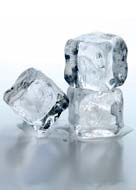
From "Things Not Generally Known": Things expand as they get hotter - but there is one very obvious exception without which life
as we know it would cease to exist. What is it?
 The
shoe fitting fluoroscope was a common fixture in shoe stores during the 1930s, 1940s and 1950s. A typical unit consisted of a vertical wooden cabinet with an opening near the bottom into which the
feet were placed. When you looked through one of the 3 viewing ports on the top of the cabinet (one for the child being fitted, one for a parent, and the one for the shoe salesman), you would see a
fluorescent image of the bones of the feet and the outline of the shoes. The machines generally employed a 50 kilovolt x-ray tube operating at 3 to 8 milliamps. When you put your feet in a
shoe-fitting fluoroscope, you were effectively standing on top of the x-ray tube. The only shielding between your feet and the tube was a one-millimetre-thick aluminium filter. Some units allowed
the operator to select one of 3 different intensities: the highest intensity was for men, the middle one for women and the lowest for children. Texas was one of the last states to ban these machines in
the US. I remember playing with one of these machines while my parents shopped for shoes - my sister and I put our feet, hands, purses, and schoolbags inside what seemed to us to be a magical
device. The
shoe fitting fluoroscope was a common fixture in shoe stores during the 1930s, 1940s and 1950s. A typical unit consisted of a vertical wooden cabinet with an opening near the bottom into which the
feet were placed. When you looked through one of the 3 viewing ports on the top of the cabinet (one for the child being fitted, one for a parent, and the one for the shoe salesman), you would see a
fluorescent image of the bones of the feet and the outline of the shoes. The machines generally employed a 50 kilovolt x-ray tube operating at 3 to 8 milliamps. When you put your feet in a
shoe-fitting fluoroscope, you were effectively standing on top of the x-ray tube. The only shielding between your feet and the tube was a one-millimetre-thick aluminium filter. Some units allowed
the operator to select one of 3 different intensities: the highest intensity was for men, the middle one for women and the lowest for children. Texas was one of the last states to ban these machines in
the US. I remember playing with one of these machines while my parents shopped for shoes - my sister and I put our feet, hands, purses, and schoolbags inside what seemed to us to be a magical
device.

Again, I wonder if this sort of time-consuming temporary art might not be more practically produced using computer graphics software.
Nevertheless, it is impressively delicate, intricate and lovely. The artist, Yulia Brodskaya, is
Russian.
 You do not want to run across any
deadly scorpions inside your house, or worse still, put your foot inside an unchecked shoe only to find a rather angry scorpion occupant taking a bite at your toes. If stung, a human may experience
numbness and pain, ranging from unpleasant to severe. Scorpions are members of
the arachnid family, and along with spiders and ticks, they can be some of the most troublesome pests to find inside the home or office. There are certain times when scorpions are more active, for
example fall (due to the fact that they're mating and reproducing) and summer (when they move about more freely because it's warm). They hibernate in the winter. Since scorpions are nocturnal
creatures, they come out after dark to hunt. If you're going to be moving around your home or outdoors in the evenings, don't go barefoot - wear some kind of shoe which can protect your feet from
unwanted stings. Be careful not to leave piles of clothing on the floor indoors as scorpions can find shelter there, leaving you at risk for a sting when you pick the clothing up. Remove brush and
wood piles on your property which may harbour critters. (New Zealand has no scorpions, I'm happy to say. This information came from an Australian site. The logo at the top of this
page is, by the way, a flat rock scorpion, the longest and likely heaviest species of scorpion in the world, commonly
found in South Africa.) You do not want to run across any
deadly scorpions inside your house, or worse still, put your foot inside an unchecked shoe only to find a rather angry scorpion occupant taking a bite at your toes. If stung, a human may experience
numbness and pain, ranging from unpleasant to severe. Scorpions are members of
the arachnid family, and along with spiders and ticks, they can be some of the most troublesome pests to find inside the home or office. There are certain times when scorpions are more active, for
example fall (due to the fact that they're mating and reproducing) and summer (when they move about more freely because it's warm). They hibernate in the winter. Since scorpions are nocturnal
creatures, they come out after dark to hunt. If you're going to be moving around your home or outdoors in the evenings, don't go barefoot - wear some kind of shoe which can protect your feet from
unwanted stings. Be careful not to leave piles of clothing on the floor indoors as scorpions can find shelter there, leaving you at risk for a sting when you pick the clothing up. Remove brush and
wood piles on your property which may harbour critters. (New Zealand has no scorpions, I'm happy to say. This information came from an Australian site. The logo at the top of this
page is, by the way, a flat rock scorpion, the longest and likely heaviest species of scorpion in the world, commonly
found in South Africa.)
 The Pentagon would
consider a military response in the case of a cyber attack against the United States, a US defence official has said. The US undersecretary of defence for policy, said the threat to US networks from
terrorists, criminals and others was real and growing. The US military recently created a new cyber command that will be led by Lieutenant General Keith Alexander, head of the secretive National Security
Agency. Alexander was confirmed in his post by the US Senate last week. In his written testimony to Congress, Alexander said that the new cyber command would be prepared to wage offensive
operations, despite the risk of sustaining damage to US networks. He told lawmakers that he expected digital operations to take place as part of a wider military campaign, but that special legal
authority would be required to respond to a cyber attack staged from a neutral country. (Sigh. Countries can fight over anything.) The Pentagon would
consider a military response in the case of a cyber attack against the United States, a US defence official has said. The US undersecretary of defence for policy, said the threat to US networks from
terrorists, criminals and others was real and growing. The US military recently created a new cyber command that will be led by Lieutenant General Keith Alexander, head of the secretive National Security
Agency. Alexander was confirmed in his post by the US Senate last week. In his written testimony to Congress, Alexander said that the new cyber command would be prepared to wage offensive
operations, despite the risk of sustaining damage to US networks. He told lawmakers that he expected digital operations to take place as part of a wider military campaign, but that special legal
authority would be required to respond to a cyber attack staged from a neutral country. (Sigh. Countries can fight over anything.)
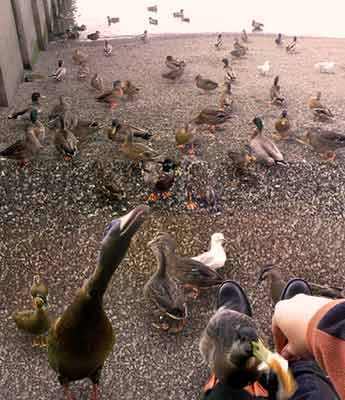
My son took this photo with his cellphone when he stopped at Chaffers Marina to feed ducks.
Mallard numbers seem to increase year on year - because (perhaps) misguided, but definitely kind-hearted people often stop to feel them?
I'm selfish, impatient and a little insecure.
I make mistakes, I am out of control and at
times hard to handle.
But if you can't handle me at my worst, then you sure as hell don't deserve me
at my best.
— Marilyn Monroe
  
So far as I can remember, there is not one word in the Gospels in praise of intelligence.
- Bertrand Russell

For other updates click "Home" (for the latest) or "Next" (for older) below
|
 Animals
Animals Animation
Animation Art of Playing Cards
Art of Playing Cards Drugs
Drugs Education
Education Environment
Environment Flying
Flying History
History Humour
Humour Immigration
Immigration Info/Tech
Info/Tech Intellectual/Entertaining
Intellectual/Entertaining Lifestyles
Lifestyles Men
Men Money/Politics/Law
Money/Politics/Law New Jersey
New Jersey Odds and Oddities
Odds and Oddities Older & Under
Older & Under Photography
Photography Prisons
Prisons Relationships
Relationships Science
Science Social/Cultural
Social/Cultural Terrorism
Terrorism Wellington
Wellington Working
Working Zero Return Investment
Zero Return Investment



























